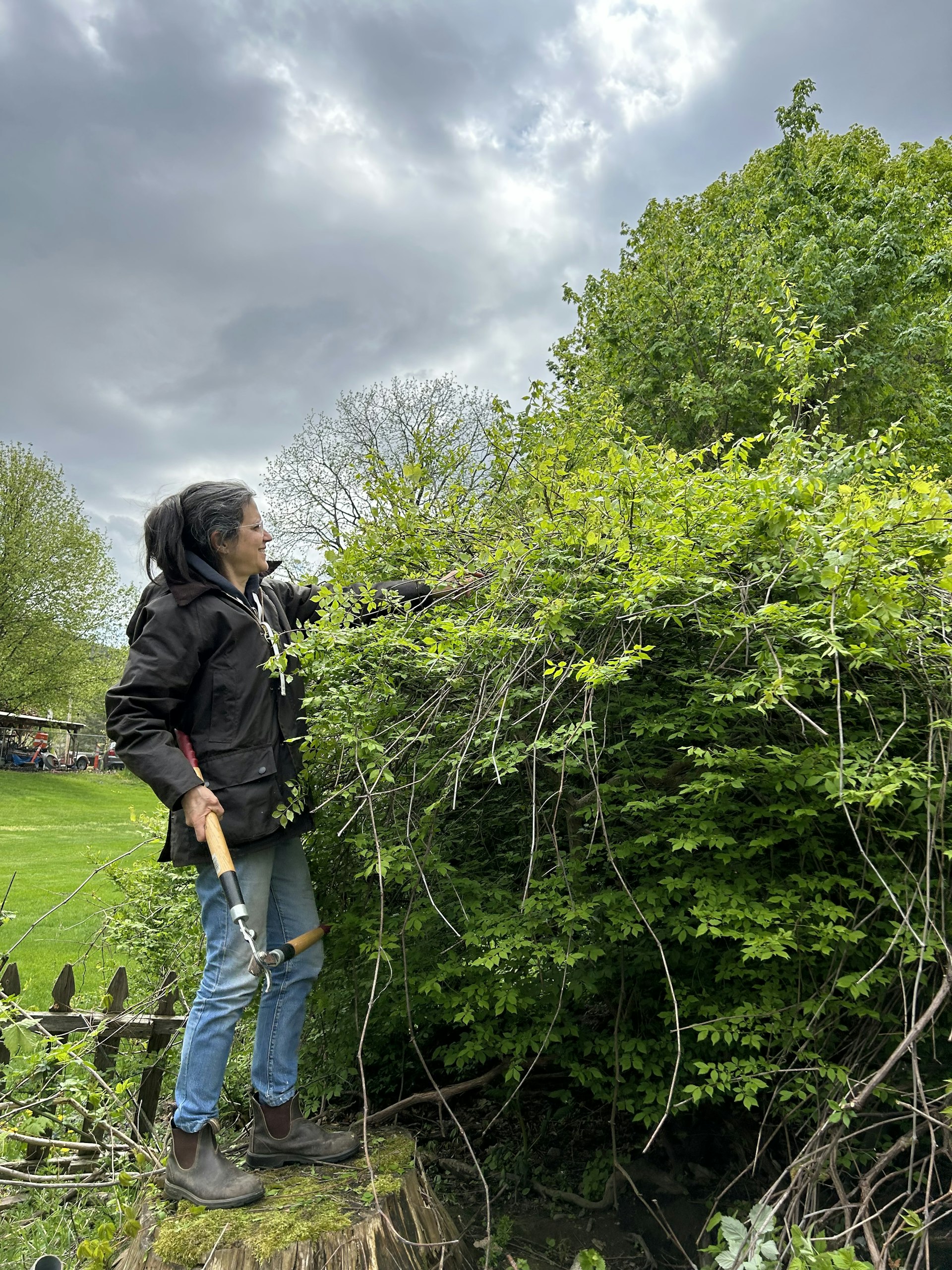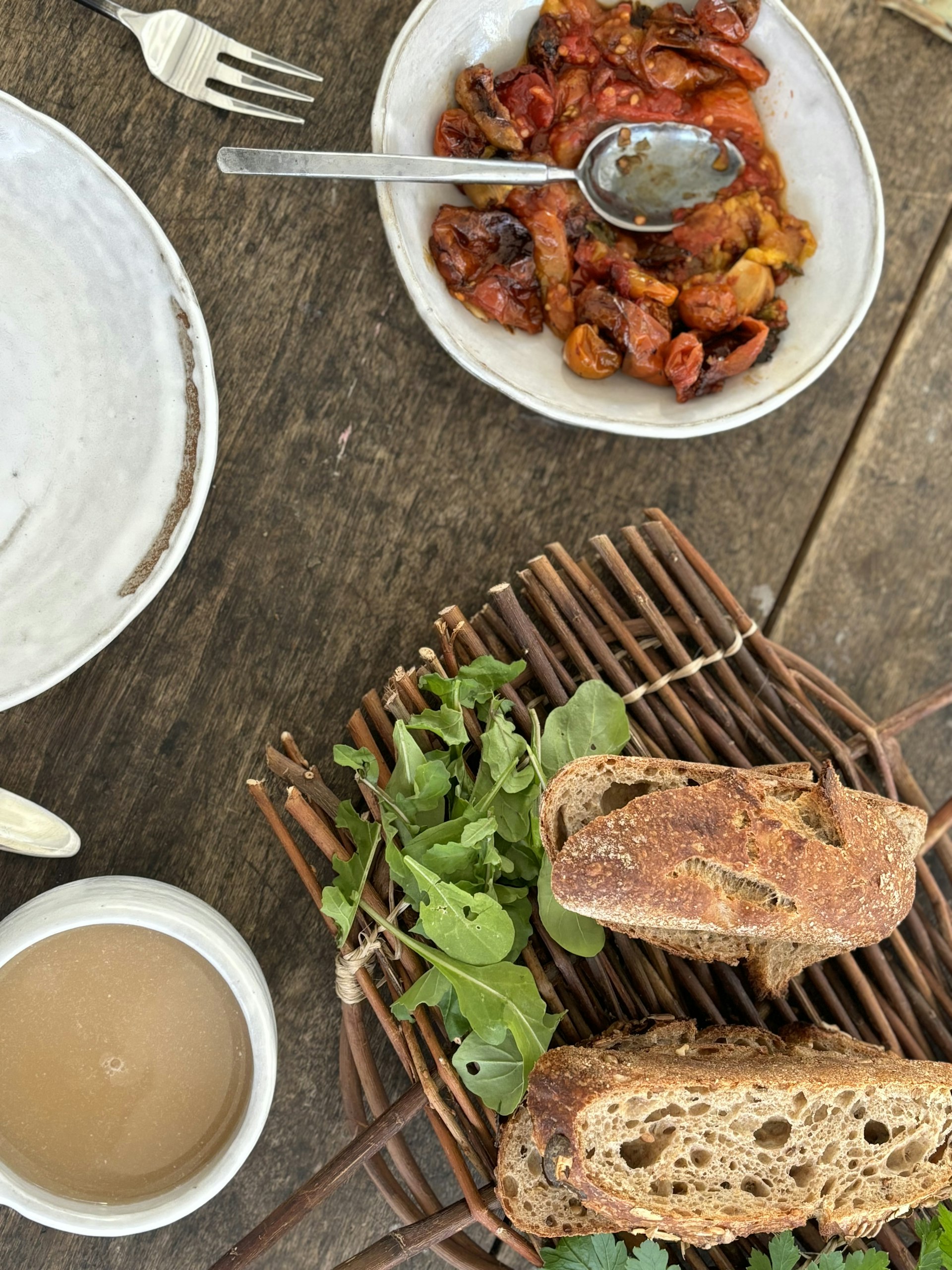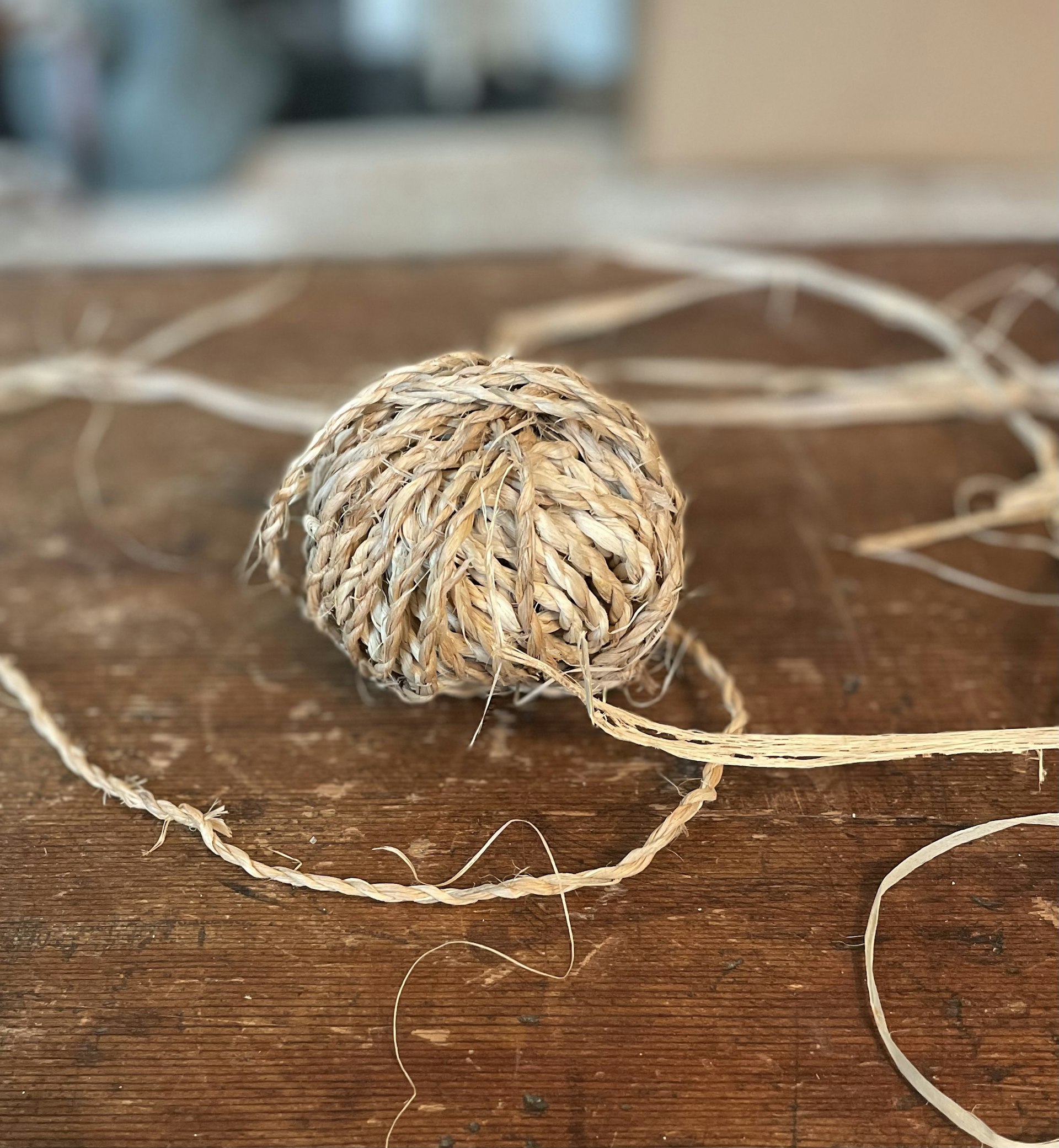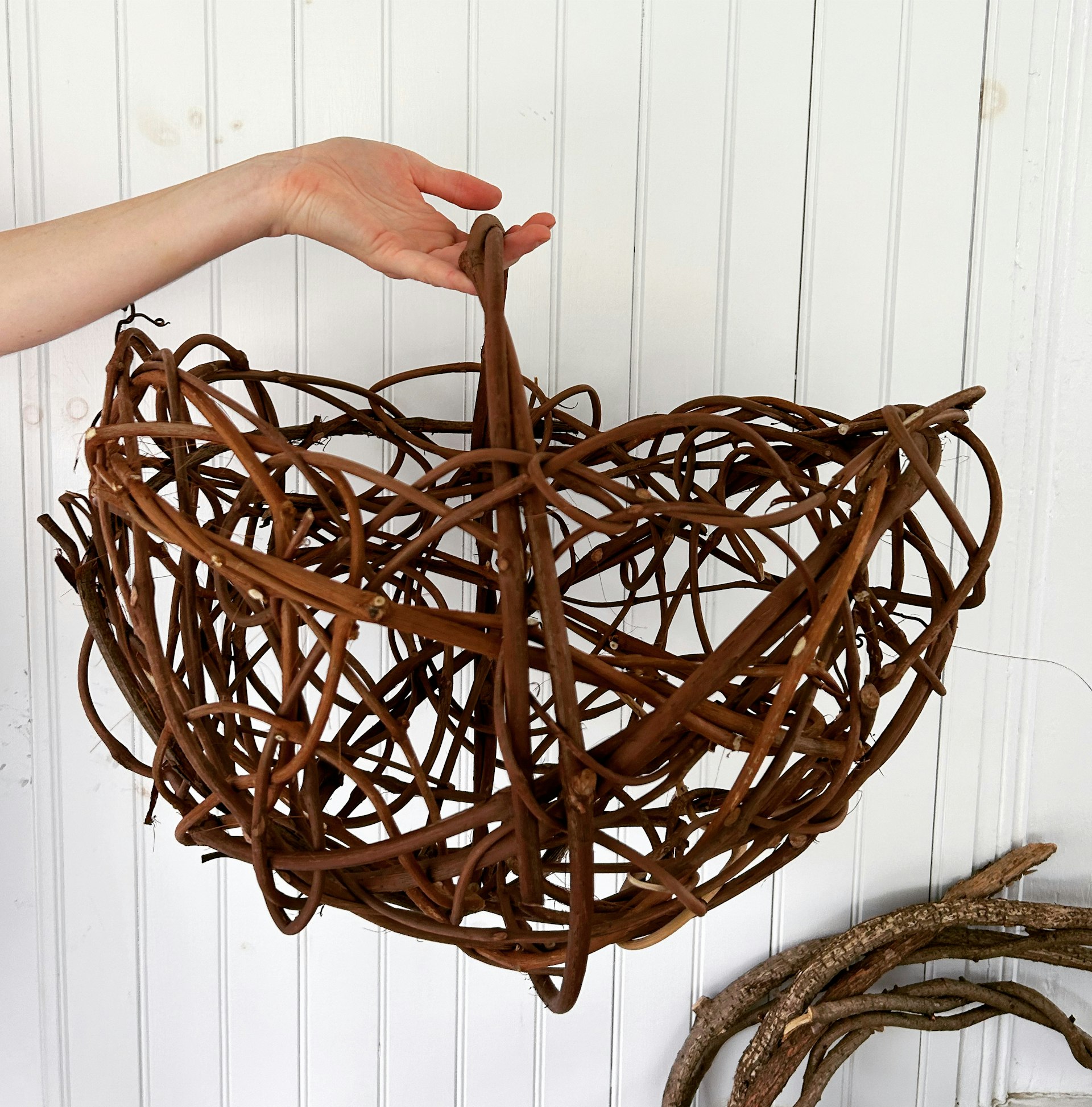September 18, 2025
The Ordinary, Extraordinary Container
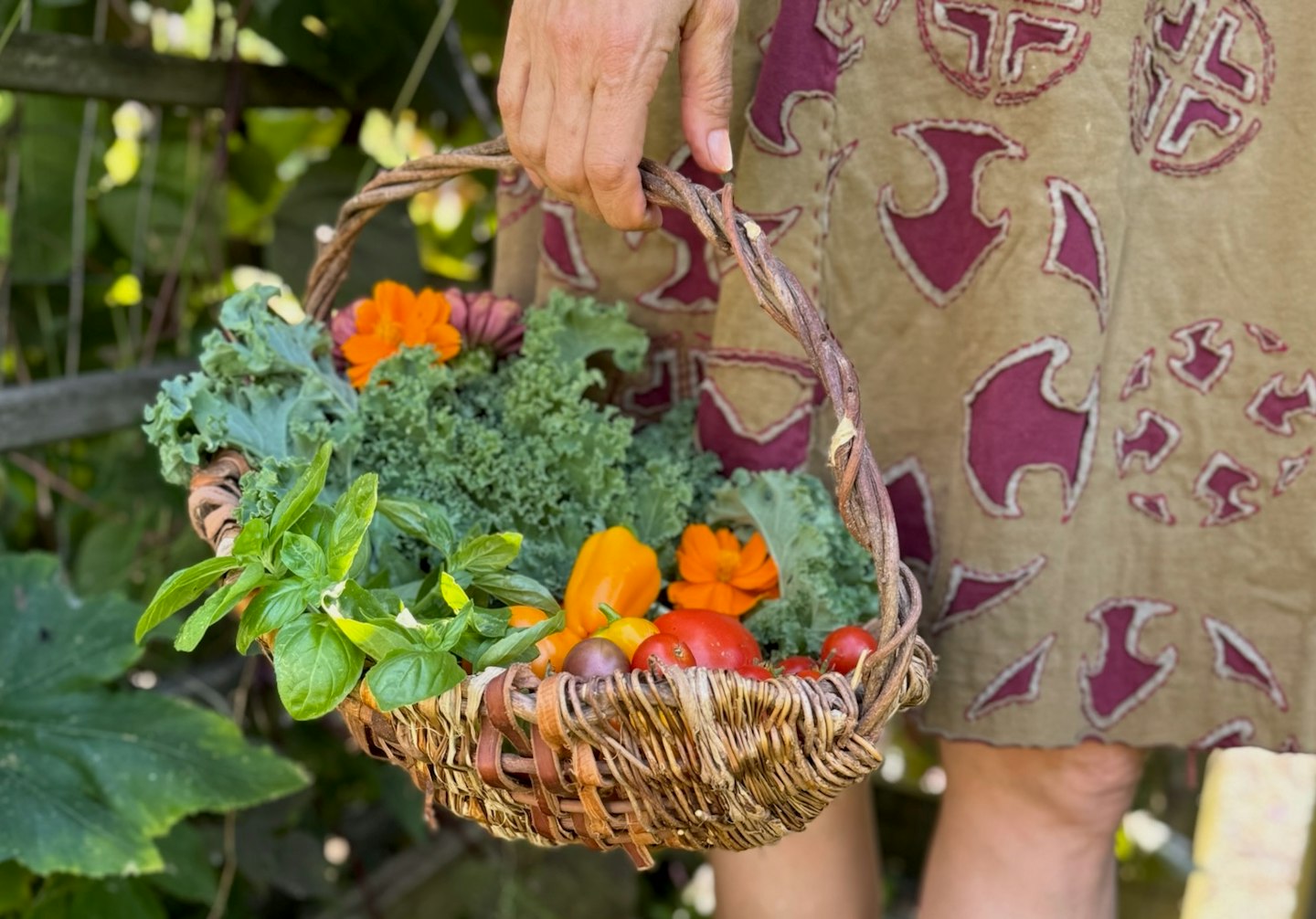
Guest Post by Melanie Falick
A few years ago, I decided to deepen my making practice and see where it would lead me. For most of my career, I had been writing about—or helping other authors write about—craft and creativity for magazines and books. For my most recent book, "Making a Life: Working by Hand and Discovering the Life You Are Meant to Live" (Artisan, 2019), I profiled knitters, weavers, quilters, natural dyers, potters, woodworkers, and other artisans, focusing on their creative journeys, the human impulse to make the ordinary extraordinary, and why making by hand is valuable in the 21st century.
Inspired by the subjects of "Making a Life" and the many other talented individuals I had met and worked with over the years, I dug in—literally—beginning by asking a family friend to help me build raised beds in my garden so I could better grow vegetables and flowers. I enrolled in pottery class to learn to make my own dishes so I would be able to serve homegrown meals on them. I thought about sewing a tablecloth and maybe an apron as well. And then it occurred to me that I could weave a basket with which to carry my harvest from the garden to the house.
From earth to table.
I had never thought seriously about making my own baskets before but now, like my ancestors, I felt a need and sought to fulfill it using my hands, my ingenuity, and the natural elements around me. Then, as often happens once you become curious about something, the path opened:
Local basketmaker Katie Grove’s Instagram post read as follows: "Are you inspired to develop a deep connection to the art of basketry and the abundant plant materials in our natural landscape? Do you want to learn how to go out into the forests and fields, identify and gather materials, and weave baskets? Join this nine-class program to connect to your creative self and the natural world while learning the ancient skill of basketry."
One Sunday each month over the course of the next nine months, I made the 45-minute drive to Katie’s studio in the woods and, along with 12 other women, learned how to forage for supplies sustainably, prepare them for use, and make containers of many sorts: coiled bowls from dried grasses, ribbed baskets of bittersweet and grapevine, folded white pine bark bins, and twined basswood pouches. With every technique, I felt increasing awe for the makers who figured out how to do all of this, hundreds of thousands if not millions of years ago.
There is a theory—called the carrier bag theory of evolution—that suggests that the container for carrying, likely innovated by females, was a key tool in our evolutionary development. I read about this theory in the 1979 book Woman’s Creation: Sexual Evolution and the Shaping of Society by Elizabeth Fisher.
Fisher wrote, “The invention of the container can be seen as fundamental in the evolution of a large-brained, two-legged human being. It freed the hands for gathering and provided temporary storage for food such as nuts and fruits. Moreover, the concept of the container was essential in the development of an infant sling.”
Fisher’s theory makes sense. Our early ancestors were hunter-gatherers, mostly living in temperate climates on vegetarian diets. Wouldn’t they have wanted something secure in which to gather and safeguard that which they foraged—and a way to carry their babies, leaving their hands free, while they went about their daily work?
“Baskets may seem inconsequential today, but through most of history they were essential items in daily life,” Katie points out one autumn day while she and I are sitting together next to a woodstove in her studio twisting lengths of basswood into cordage. “All of our ancestors made baskets no matter where we are in the world. The techniques are in all of our DNA.”
Cordage made from the inner bark of a basswood tree.
In 1986 author Ursula LeGuin published a fascinating essay about Fisher’s carrier bag theory in which she explained how it made her feel grounded in human culture in a way that she had never before experienced. Accustomed to tales about early humans centered on competition and brutality, about men hunting big game in the jungle and returning home victorious, LeGuin was relieved to be introduced to an alternative perspective, one that emphasized communal care instead of domination.
“We’ve heard it, we’ve all heard about all the sticks, spears and swords, the things to bash and poke and hit with, the long, hard things, but we have not heard about the thing to put things in, the container for the thing contained. That is a new story. That is news.”
Like LeGuin I don’t identify with stories that focus on competition and brutality yet that is how our history as well as our current events are often presented to us. When I research early tools, I find many writings about sharp things—flints and other types of blades—used to cut, break, scrape, and kill. When I think back to the history classes of my childhood, I recall, more than anything else, lessons about wars over land, resources, and, ideas, and about who dominated whom militarily and/or economically. LeGuin suggests that stories about carrier bags may not have endured because the bags themselves, made of natural materials, disintegrated over time and also because the stories of gathering—one berry, two berries, three berries—were not nearly as dramatic and, thus entertaining, as those of the hunters who perhaps spent many days and nights chasing a large woolly mammoth, ultimately subduing it with their sharp blades and returning home with their bloody bounty.
Tension platter with potatoes from the garden.
While it’s hard for me to imagine being enthralled by a story tracking the picking of one berry at a time (unless composed by an exceptionally talented writer), I am captivated by the slow work of basketmaking. Since taking Katie’s class, I’ve realized that my favorite projects are the simpler, utilitarian ones I make using materials I forage in my backyard and neighborhood. I’ve built trellises to support the cucumbers in my garden with a neighbor’s bamboo combined with grapevine that was strangling my pussy willows, and with errant pussy willow suckers and rose of Sharon branches I have made platters on which I like to serve bread and crackers at meals (at which I also use the ceramic plates and bowls I learned to make).
And, for carrying my harvest from the garden to the house, I now have two choices: an oval ribbed basket I wove with bittersweet and willow for the frame (and an assortment of vines and barks for the weavers) and a larger, rounder random-weave basket using grapevine.
Random-weave grapevine basket.
When I see a beautiful basket in Katie’s studio, in a store, or in a museum, I am curious about the maker and I admire and appreciate the materials and work that went into making it more than ever, but I don’t wish I could have it. Rather, I consider whether I could gather the materials sustainably and learn to create one myself. In this way, I make the ordinary—the useful tools of everyday life—extraordinary just like those who came before me.
Written by Melanie Falick, an independent writer, editor, and creative consultant—and a lifelong maker. To learn more about her, follow her on Instagram and check out her most recent book, Making a Life: Working by Hand and Discovering the Life You Are Meant to Live.
Learn Basketry with VAWAA Artists
Browse all VAWAA artist apprenticeships worldwide and book one today.
Subscribe to our weekly newsletter to stay inspired with new artist stories and creative apprenticeships.
